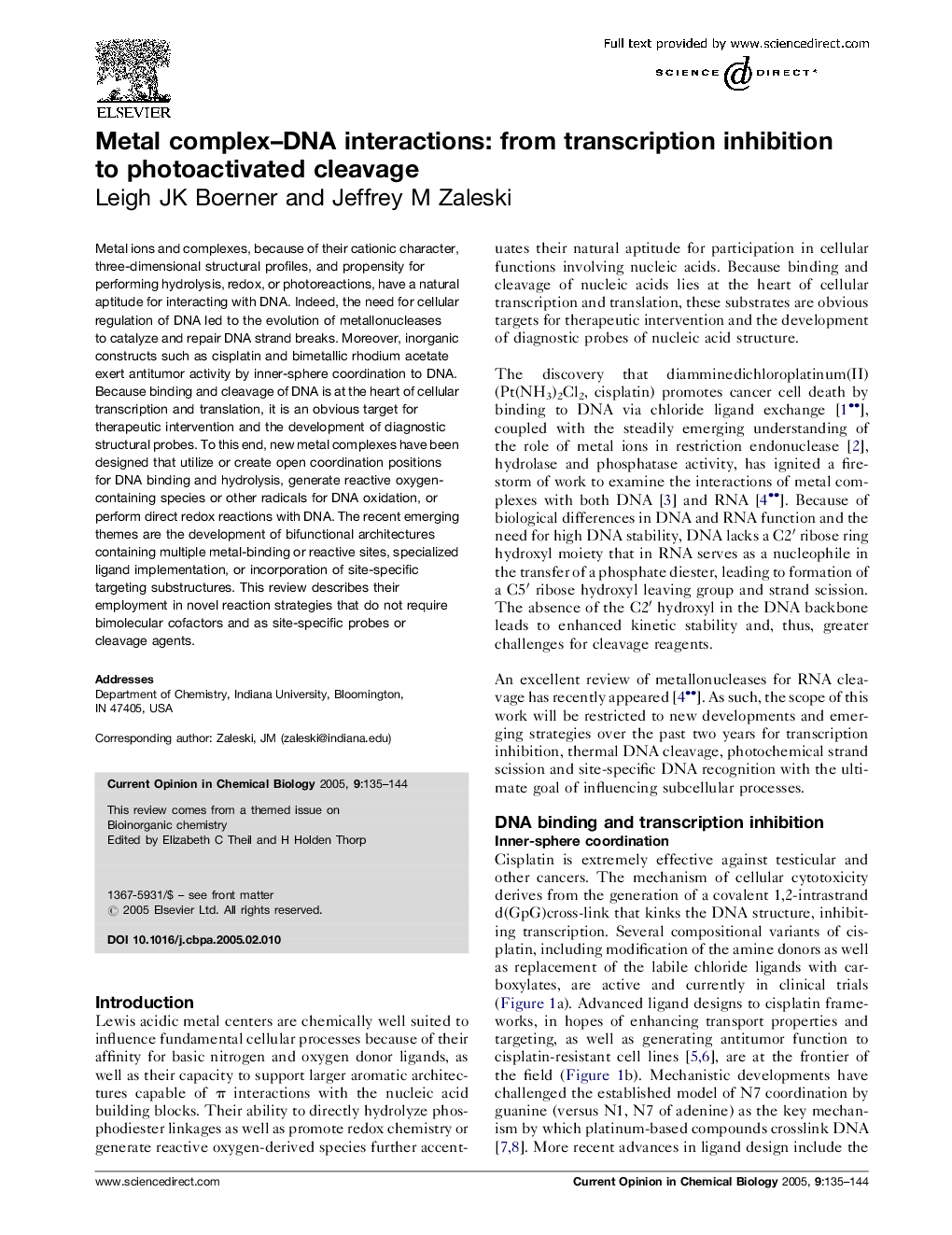| Article ID | Journal | Published Year | Pages | File Type |
|---|---|---|---|---|
| 10565228 | Current Opinion in Chemical Biology | 2005 | 10 Pages |
Abstract
Metal ions and complexes, because of their cationic character, three-dimensional structural profiles, and propensity for performing hydrolysis, redox, or photoreactions, have a natural aptitude for interacting with DNA. Indeed, the need for cellular regulation of DNA led to the evolution of metallonucleases to catalyze and repair DNA strand breaks. Moreover, inorganic constructs such as cisplatin and bimetallic rhodium acetate exert antitumor activity by inner-sphere coordination to DNA. Because binding and cleavage of DNA is at the heart of cellular transcription and translation, it is an obvious target for therapeutic intervention and the development of diagnostic structural probes. To this end, new metal complexes have been designed that utilize or create open coordination positions for DNA binding and hydrolysis, generate reactive oxygen-containing species or other radicals for DNA oxidation, or perform direct redox reactions with DNA. The recent emerging themes are the development of bifunctional architectures containing multiple metal-binding or reactive sites, specialized ligand implementation, or incorporation of site-specific targeting substructures. This review describes their employment in novel reaction strategies that do not require bimolecular cofactors and as site-specific probes or cleavage agents.
Related Topics
Physical Sciences and Engineering
Chemistry
Chemistry (General)
Authors
Leigh JK Boerner, Jeffrey M Zaleski,
